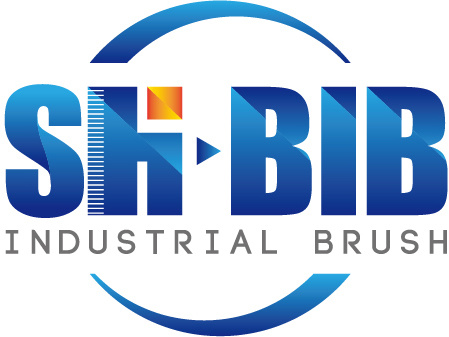Cylindrical Brushes in Candy Production
2025-11-17

The food industry is one of the most important activities in the entire manufacturing sector, as it is responsible for the food autonomy of a territory and must be a priority to have full capacity and sovereignty to feed the entire population of that territory with the available resources.
For us, it is a significant market in the consumption of industrial brushes, as the food industry is a sector that uses advanced technological methods, machines, and tools, just like any other industrial manufacturing process, but with the extra requirement of using only food-compatible materials. It must also take special care with the storage, use, and expiry of raw materials, with clear and concise processes to avoid cross-contamination.
In this post, we will focus a bit more on the production of sweets. For the industrial production of sweets, mainly the same raw materials are used as in artisan sweets: sugar, glucose, and water, but extra additives such as sweeteners, preservatives, and both natural and artificial flavourings are added.
The industrial manufacturing process begins with a mixture of the different ingredients in the proportion that each manufacturer considers according to their own recipe. Once combined, they begin to cook, raising the temperature until obtaining a pasty and viscous mixture by losing water, which is called amber in the sector.
This is the key and most important process in the production of sweets, in the removal of water from the mixture during the “caramelisation” phase, causing the chemical reaction of the sugars.
At this stage, technical brushes are not yet involved in the process since the resulting sweet mass, being hot, has sufficient viscosity to give the desired shape by mechanical deformation, and each factory has its process: Some sweets are extruded and cut, others are moulded by gravity or pressure, and others are laminated, seeking the final shape.
A subsequent rapid cooling phase hardens the base of the sweet into the desired shape, being more brittle or tough depending on each manufacturer’s temperature gradient and additives.
At the end of this phase is when we start to see cylindrical brushes in the process, as they sometimes wrap the plastic wrapper around the sweet.
Likewise, in more automated processes, brushes are used to move the sweets gently and precisely towards the packaging stations.
Sweets with sticks have a peculiar process where the stick is inserted into the hot mass and they cool together.
In almost all industrial manufacturing processes of sweets with sticks, cylindrical industrial brushes are involved in moving and positioning the sticks since they are very slender and light cylinders and therefore very difficult to handle. These rollers move them with the help of guides.
Sweets and candies, although not an essential food industry, are important in the industrial mix of food manufacturers that must ensure the food sovereignty of a territory. Being high-consumption products, they are produced in large quantities, making it a highly automated food industry where Bursten is more likely to introduce technical brushes into the process.
Cylindrical brushes, also known as rotary brushes or coil brushes, play a crucial role in the automated processes of candy and confectionery production, primarily for maintaining hygiene, handling products, and applying coatings.
🍬 Key Applications in Candy Production
Cylindrical brushes are integrated into various stages of the manufacturing line, performing essential tasks:
Conveyor Belt Cleaning and Hygiene: This is one of the most common uses. Rotating brushes are installed to continuously scrub and remove residues (sugar dust, syrups, candy fragments, etc.) from conveyor belts. This prevents buildup, maintains sanitary conditions, and reduces the risk of cross-contamination.
Product Handling and Positioning: Due to their gentle yet precise action, cylindrical brushes are used as rollers to move, guide, and position candies, particularly fragile or oddly shaped items, towards packaging or other processing stations.
Applying Coatings: Brushes can be used to apply a uniform, thin coating of glazes, oils, or waxes onto the surface of finished candies, which helps with presentation, prevents sticking, or preserves freshness.
Cleaning and Polishing: In some applications, softer cylindrical brushes may be used for gentle surface cleaning or polishing of candies to give them a smooth, finished look before final packaging.
Stick Handling (Lollipops): For stick candies like lollipops, brushes are often involved in moving and precisely positioning the slender sticks for insertion into the hot candy mass.
🔬 Materials and Construction
Since they interact directly or indirectly with food, the brushes used in candy production must meet strict food-grade (FDA-approved) standards.
| Feature | Typical Food-Grade Specifications |
|---|---|
| Filaments (Bristles) | Nylon 6.12 (preferred for direct food contact due to low moisture absorption and excellent chemical resistance), Polypropylene, or natural fibers like Tampico. |
| Cores | Stainless steel, aluminum, wood, or food-grade plastics like high-density polypropylene (HDPP). |
| Design | Often constructed as spiral brushes (where a strip brush is coiled around a core) or tufted brushes, designed for easy cleaning and high filament density for maximum contact. |
The bristle material and stiffness are carefully selected based on the application—soft bristles for gentle handling or polishing, and stiffer, durable filaments for aggressive conveyor cleaning.
Would you like to know more about food-contact materials in industrial brushes?
Previous:
Contact us
TEL: 008613781822862
ADD: Building 1, No 115, Lane 1276, Nanle Road, Songjiang District, Shanghai 201611, China








